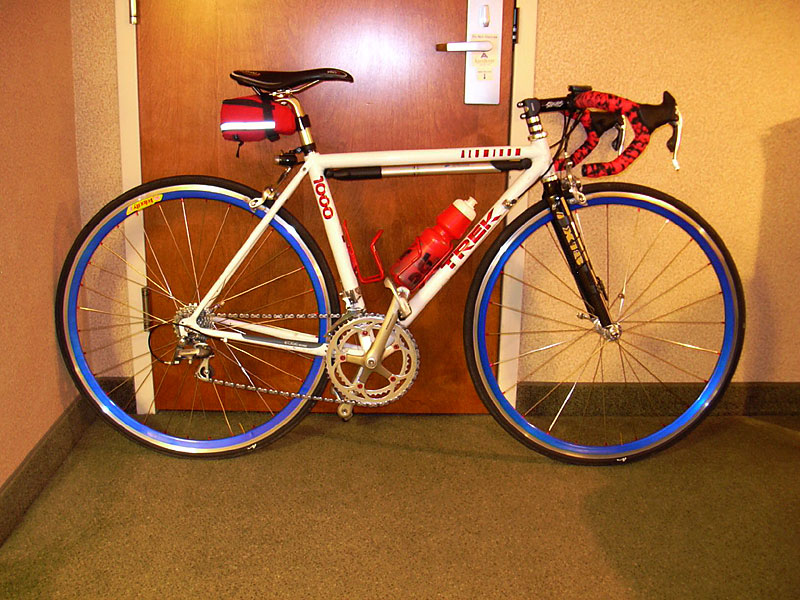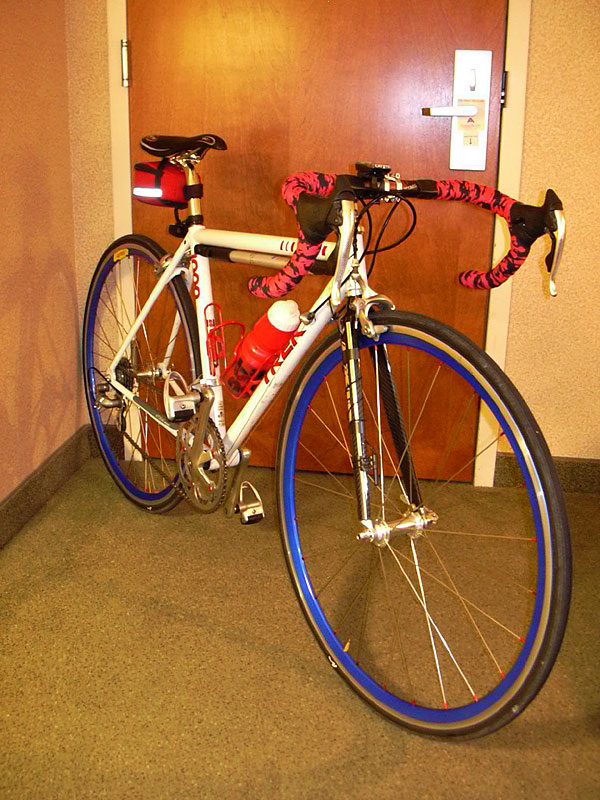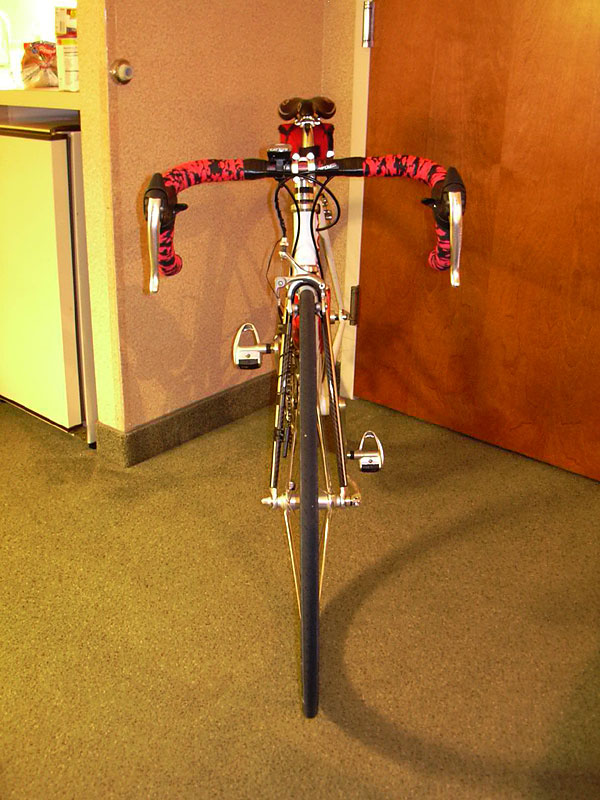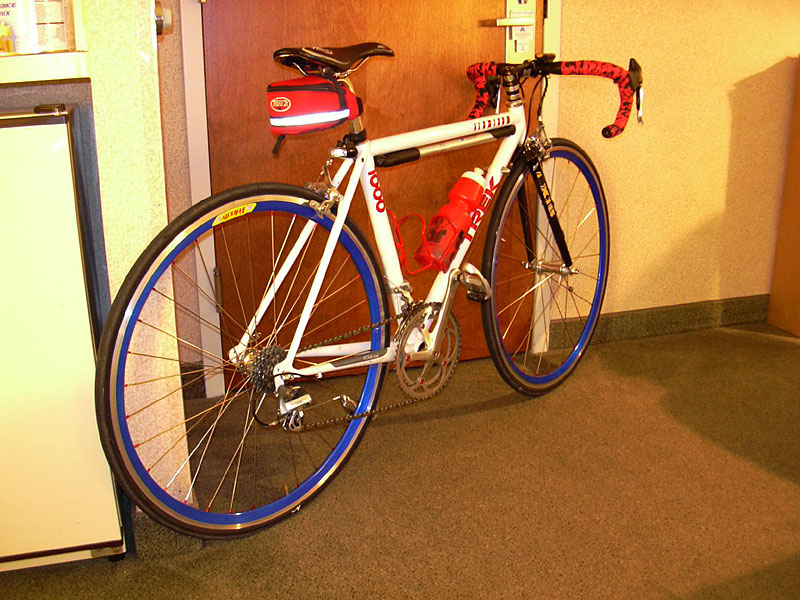|
Note - as you may have guessed, this bike is really on the edge of what I'd define as a Current Classic - however a few things work in its favor. First, I will always have a soft spot for any bike that gets someone into the sport, and for Bob, this is that bike. Second, although it lacks clearance and is fabricated from aluminum (though not tig-ed as I'd earlier stated*), this bike gets ridden (and if the owner is still excited about the bike after 16+ years, that's a good reason in and of itself) - when you are wearing stuff out, that speaks highly for its inclusion (it's also running a freewheel...). Finally, the next three submissions to the Current Classic Gallery are also from Bob, and they completely embody the Current Classic ideal. Enjoy! - ed. Hi Jim, This is my Trek 1000 and itŐs my first ŇrealÓ bike. I bought it in April 1990 for $475.00. This was the bike that got me really involved in the cycling sport; as a hobby, way of life, and for many entertaining and happy moments. It holds most of my personal best times for distance and climbs, and the fastest speeds for sprints and going down hill. And for me it always thrilled me that a bike so inexpensive turned out to be such a great bike! This bike was first equipped with complete Suntour components and within two years I added command shifters (poor man's STI's) and it ran great until one shifter broke and at the time I was not able to get a replacement. So in 1996 I upgraded both derailleurs with ShimanoŐs Ultegra combined with the SachŐs brake/shifters. ItŐs on its fourth set of wheels, third set of pedals and forks, second set of brakes. Most parts were upgraded only for the sake of upgrade but I did break two rear wheels, my first (worn the side-walls thin and it broke) and third (hit a pot hole while sprinting at 38 mph on a training ride with a team). Since the frame is made from 6000 series aluminum, the rear spacing remains at 126 mm which limits my choices to when I need a wheel built. It still uses a 7 speed F/W. This is still one of my best riding bikes of the six that I currently own. Trek did a great job designing and building a well balanced, 47 cm frame. This is probably one of the first generation compact frames in the industry. Bob Torres New Jersey *Addendum
from Bob: This is Trek's second generation aluminum frame, the first was the Trek 2000 released in the mid 80's equipped with Shimano's Dura ace and had a slightly longer rear stays. In the late 80's the 1000 series were released, the 1000, 1200, 1220, 1400/1420 and 1500. When the carbon fiber tubes replaced the main tubes, the 2000 series were made which confuses some people with the older 2000 model. |
|
 |
|
 |
|
 |
|
|
|
|
|
|
|
|
|
|
|
|
|
|
|
|
|
|
|
|
|
|
Current
Classics Photo Gallery - Cross Bike
Photo Gallery
Single Speed Garage Photo Gallery
-
Working Bikes & Practical Hardware
